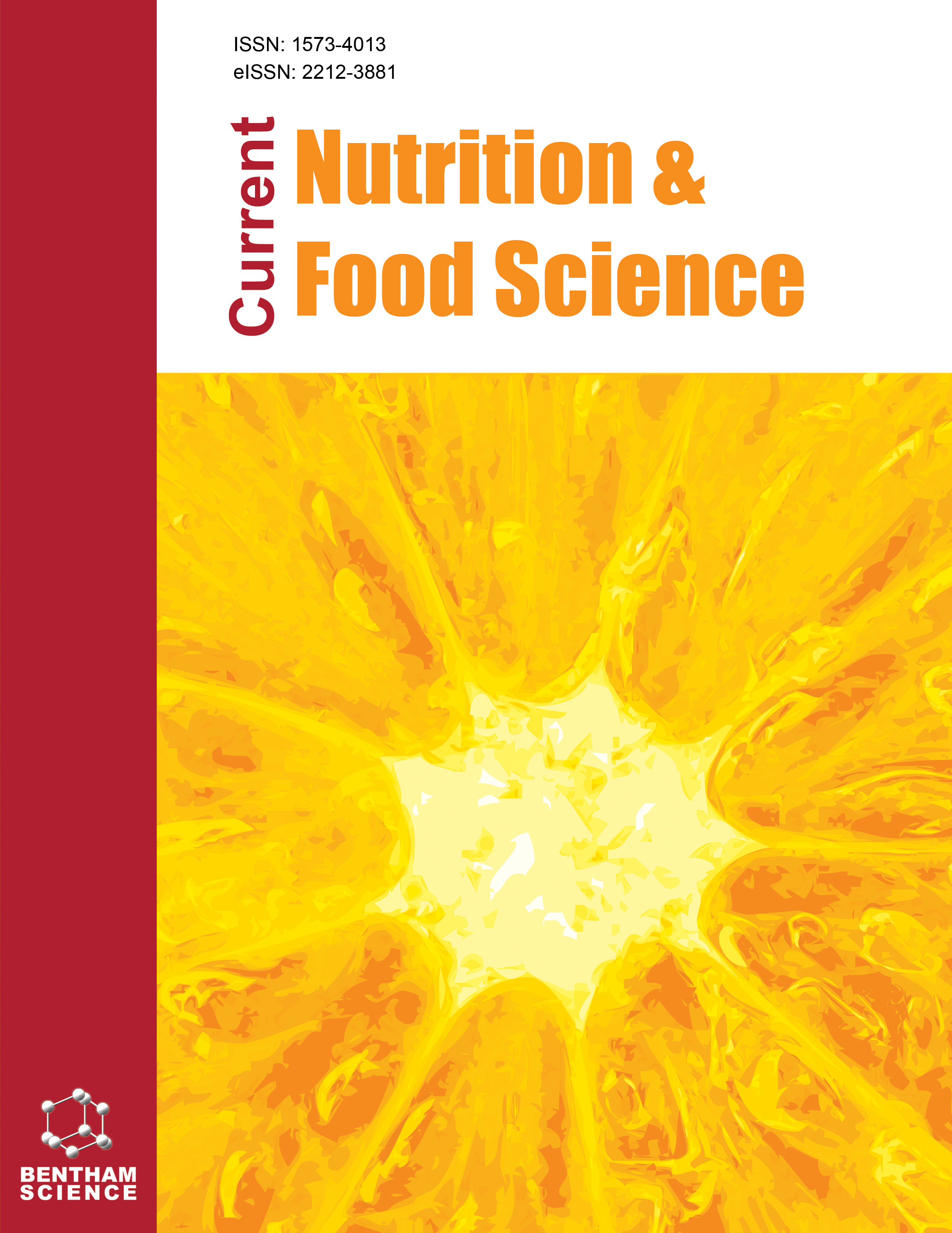- Home
- A-Z Publications
- Current Nutrition & Food Science
- Previous Issues
- Volume 3, Issue 1, 2007
Current Nutrition & Food Science - Volume 3, Issue 1, 2007
Volume 3, Issue 1, 2007
-
-
Editorial
More LessBy Fidel ToldraThe second year of Current Nutrition & Food Science has been completed after the publication of 4 issues in 2006, with a total number of 36 manuscripts. One issue per trimester will be the standard publication procedure for the following years. We are very happy and thankful for the support received from our Editorial Advisory Board members as well as from many other scientists who showed profound interest in our Read More
-
-
-
Breakfast and Learning: An Updated Review
More LessBy J. M. MurphyOver the past five years, significant new evidence has documented the link between eating breakfast and learning. Recent studies show that skipping breakfast is relatively common among children in the U.S. and other industrialized nations and is associated with quantifiable negative consequences for academic, cognitive, health, and mental health functioning. When combined with new data on the prevalence and im Read More
-
-
-
Malnutrition in Patients with End-Stage Renal Disease - Anorexia,Cachexia and Catabolism
More LessAuthors: Jonas Axelsson, Juan Jesus Carrero, Bengt Lindholm, Olof Heimburger and Peter StenvinkelPatients with end-stage renal disease (ESRD) commonly present both anorexia (defined as reduced apetite) and a catabolic state leading to loss of protein from skeletal muscle and other tissues. Additionally, these patients carry an inflammatory burden, which may play a pivotal role in the evolution of not only the observed cachexia, but also in the massive increase in relative risk of cardiovascular disease (CVD) in this popul Read More
-
-
-
Nutritional Interventions and Primary Prevention of Type 2 Diabetes
More LessAuthors: Marly A. Cardoso and Frank B. HuType 2 diabetes mellitus (DM) is one of the most important public health challenges in the world. Its increasing prevalence in many countries and the difficult metabolic control of patients with type 2 DM justify the study of strategies for primary prevention. The present review describes evidence from epidemiologic studies and clinical trials regarding recommendations for dietary prevention of type 2 DM. Prospective epi Read More
-
-
-
Laboratory-Based Studies of Eating Among Children and Adolescents
More LessThe prevalence of pediatric overweight has increased dramatically over the past three decades, likely due to changes in food intake as well as physical activity. Therefore, information examining eating patterns among children and adolescents is needed to illuminate which aspects of eating behavior require modification to prevent and treat pediatric overweight. Because child self-report and parent-report of children's eating Read More
-
-
-
Adiposity and the Gut - The Role of Gut Hormones
More LessAuthors: Vian Amber and Stephen R. BloomThe WHO has declared that obesity is one of the top five risk conditions in the world. Body adiposity occurs as a consequence of an imbalance between food intake and energy expenditure. The hypothalamus integrates complex neural and humoral signals that coordinate the initiation and termination of feeding and regulates energy expenditure. In the last decade there has been considerable interest in the role of gut hor Read More
-
-
-
Recent Trends in Development of Fermented Milks
More LessAuthors: H. K. Khurana and S. K. KanawjiaEver-growing consumer demand for convenience, combined with a healthy diet and preference for natural ingredients has led to a growth in functional beverage markets. Current trends and changing consumer needs indicate a great opportunity for innovations and developments in fermented milks. Scientific and clinical evidence is also mounting to corroborate the consumer perception of health from fermented mil Read More
-
Volumes & issues
-
Volume 21 (2025)
-
Volume 20 (2024)
-
Volume 19 (2023)
-
Volume 18 (2022)
-
Volume 17 (2021)
-
Volume 16 (2020)
-
Volume 15 (2019)
-
Volume 14 (2018)
-
Volume 13 (2017)
-
Volume 12 (2016)
-
Volume 11 (2015)
-
Volume 10 (2014)
-
Volume 9 (2013)
-
Volume 8 (2012)
-
Volume 7 (2011)
-
Volume 6 (2010)
-
Volume 5 (2009)
-
Volume 4 (2008)
-
Volume 3 (2007)
-
Volume 2 (2006)
-
Volume 1 (2005)
Most Read This Month
Article
content/journals/cnf
Journal
10
5
false
en


